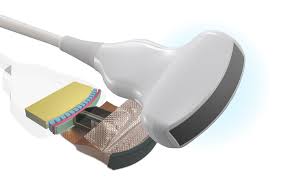MARKET OVERVIEW
Global Medical Display market is estimated to reach $3,210.5 Million by 2031; growing at a CAGR of 4.8% from 2024 to 2031.
Medical displays are crucial in the healthcare industry, providing high-resolution, bright, and accurate images for diagnosis and treatment planning. These displays are utilized in various medical applications such as radiology, surgery, and patient monitoring. Manufacturers are continuously innovating to enhance display performance, including resolution, brightness, contrast ratios, and incorporating touchscreens and multi-modality imaging capabilities.
The strict regulatory standards in the medical display market ensure that displays meet performance and safety requirements. With trends toward telemedicine and remote diagnostics, the demand for high-quality image transmission over distances is increasing. Additionally, the digitization of healthcare is driving the need for displays integrated with digital platforms to ensure proper representation of digital images for patient care.
The growth of minimally invasive surgeries and diagnostic techniques using real-time high-definition images is contributing to the market growth. As AI applications in medical imaging increase, there is a parallel demand for displays that can keep up with complex visualizations created by AI algorithms. Different regions in the Global Medical Display market will experience varying growth trajectories based on health infrastructure, diagnostics needs, technological adaptation, and regulatory environments.
Ultimately, the Global Medical Display market is essential for future healthcare advancements, driven by technology development and the growing emphasis on digital solutions in healthcare. The continuous evolution of technology and the increasing demands of medical professionals are pushing manufacturers to innovate and meet the evolving requirements of the industry.

GROWTH FACTORS
The Global Medical Display market is expected to grow due to an increasing demand for diagnostic imaging procedures. Technological advancements like 4K resolution and OLED screens have improved the quality of medical imaging, allowing for clearer and more detailed images. However, the high cost of these advanced displays may limit their adoption, especially in smaller healthcare facilities with tight budgets. Stringent regulatory requirements and standards also slow down the entry of new products into the market, affecting market growth for innovative companies.
Despite these challenges, the market has significant potential for growth, particularly with the rise of telemedicine and remote diagnostics. Medical displays are now crucial components of telemedicine setups, supporting consultations and diagnostics from afar. Healthcare providers are investing in technologies that enhance diagnostic accuracy and facilitate new models of care delivery, driving the market forward.
Overall, while challenges exist, the Global Medical Display market outlook is promising, with a continuing need for high-quality medical imaging and ongoing technological advancements driving growth in the industry.

MARKET SEGMENTATION
By Technology
The global medical display market is predicted to grow due to technological advancements and the increasing demand for high-quality medical imaging. Different types of displays like LED-backlit LCD, CCFL-backlit LCD, and OLED are popular in healthcare settings due to their energy efficiency, long life, and ability to provide clear images. CCFL-backlit LCDs, although older, are still used in some sectors due to familiarity and cost-effectiveness.
OLED technology is considered the future of medical displays as it offers better image quality with true blacks, higher contrast ratios, and better color representation. These features are crucial in specialties like radiology and surgery where details are crucial to patient outcomes.
Despite being pricier, OLED displays are expected to become more common in the global medical display market in the coming years.
By Display Color
The report discusses the growing Global Medical Display Market in the healthcare sector due to advancements in technology. Displays used by medical professionals for viewing critical images and diagnostic information are experiencing significant growth. There are two types of displays: color displays and monochrome displays. Color displays are popular for providing detailed images, especially in radiology, for accurate diagnosis. The movement towards color displays is driven by increased imaging accuracy and the ability to detect subtle differences in tissues. Monochrome displays, on the other hand, offer higher brightness and clarity, making them useful for viewing X-rays and mammograms. Despite the trend towards color displays, monochrome displays are still important for diagnostic applications requiring image clarity.
The future of medical displays will focus on improvements in brightness, resolution, and energy efficiency, making them essential for medical diagnostics. The Global Medical Display market is expected to continue growing due to advancements in medical imaging technology. The demand for both color and monochrome displays is likely to increase as healthcare providers seek advanced tools for improving patient outcomes.
By Application
The Global Medical Display market is rapidly evolving due to technological advancements shaping the future of healthcare. Medical displays are crucial in diagnosis and treatment, meeting high standards with increasing sophistication. Demand for high-quality imaging is driving market growth, especially in surgical imaging for precise and real-time imaging in minimally invasive surgeries and robotic-assisted procedures.
Clinical review applications depend on displays for reviewing patient information and diagnostic images, with increased demands for reliability and accuracy to support efficient clinical workflows. Diagnostic imaging requires high-resolution displays for interpreting complex images from MRI, CT, and ultrasound, with the need for more displays as imaging technologies evolve.
Patient monitoring applications call for displays to represent vital signs and other critical data accurately and reliably, supporting continuous and remote monitoring trends in healthcare. As technology advances, the market for better-quality medical displays is expected to grow across various applications, becoming essential in modern healthcare settings.
By Distribution Channel
The Global Medical Display market is expected to grow due to advancements in medical technologies and the increasing demand for accurate medical images. Hospitals are the largest users of medical displays, utilizing them for surgeries and medical procedures to provide clear and detailed images for improved patient care.
Clinics and diagnostic centers also rely on high-resolution displays for the early diagnosis of chronic diseases. The trend of personalized medicine further emphasizes the need for quality medical displays to cater to individual patient needs. Ambulatory surgical centers are also a key sector in this market, requiring reliable displays for the smooth execution of surgical procedures.
As more surgeries are being conducted in outpatient centers, the demand for high-performance medical displays is expected to increase. Overall, the market will see further innovation to develop displays that meet the evolving requirements of healthcare providers for accurate diagnosis and improved patient care.
REGIONAL ANALYSIS
Advanced technology in healthcare and the increasing need for accurate diagnosis and imaging are expected to drive the Global Medical Display market. Medical displays are crucial for providing clear images that aid in diagnosis and treatment planning. Different regions like North America, Europe, Asia-Pacific, South America, and the Middle East & Africa play a role in the market's growth.
North America, with countries like the U. S. , Canada, and Mexico, leads in advanced medical technologies due to robust infrastructure and R&D investments. Europe, including the UK, Germany, France, and Italy, is also growing, with established healthcare systems and a focus on early diagnosis. The Asia-Pacific region, including India, China, Japan, and South Korea, is rapidly growing due to increased health expenditure, advanced technology adoption, and aging populations.
Emerging markets like South America and the Middle East & Africa, including countries like Brazil, Argentina, and the GCC countries, show improving healthcare infrastructures and a focus on quality care, leading to potential demand for medical displays.
Overall, the demand for advanced medical displays is increasing globally, driven by the growing healthcare needs and technological advancements. The Global Medical Display market is projected to play a significant role in the future of healthcare by providing physicians with the tools needed for optimal patient treatment.

KEY INDUSTRY PLAYERS
Competition in the global medical display market is fierce, with key players like Barco NV, Eizo Corporation, and Sony Corporation leading the way in advancing display technologies for improved medical image quality and diagnostics. Other notable companies include LG Display Co. , Ltd. , Siemens Healthineers AG, and Advantech Co. , Ltd, each making significant contributions to the industry. Smaller players like NEC Display Solutions, AsusTek Computer Inc. , and BenQ Corporation also play a role by offering specialized products for niche markets.
In the coming years, the market is expected to become more dynamic with major players like Dell Technologies Inc. , HP Inc. , and ViewSonic Corporation enhancing their product portfolios with innovations like AI-driven image enhancements and augmented reality, making medical displays more advanced and affordable. New entrants such as Shenzhen Beacon Display Technology Co. , Ltd and Nanjing Jusha Display Technology Co. , Ltd from China are also making their mark, showcasing a trend where innovation is not limited to traditional industry leaders.
The focus of the market will continue to be on improving display technologies to meet the escalating demands of healthcare as competition intensifies. Ultimately, the companies that lead in innovation and maintain high quality will shape the future of medical imaging and diagnostics for years to come.
REPORT SCOPE AND SEGMENTATION
|
Attributes |
Details |
|
Market Size By 2031 |
USD 3210.5 Million |
|
Growth Rate |
CAGR of 4.8% |
|
Forecast period |
2024 - 2031 |
|
Report Pages |
250+ |
|
By Technology |
|
|
By Display Color |
|
|
By Application |
|
|
By End-user |
|
|
By Region |
|
|
Key Market Players |
|



_page-000175.jpg)
_page-000177.jpg)
_page-000176.jpg)
_page-000174.jpg)


8.jpg)



 APAC:+91 7666513636
APAC:+91 7666513636





